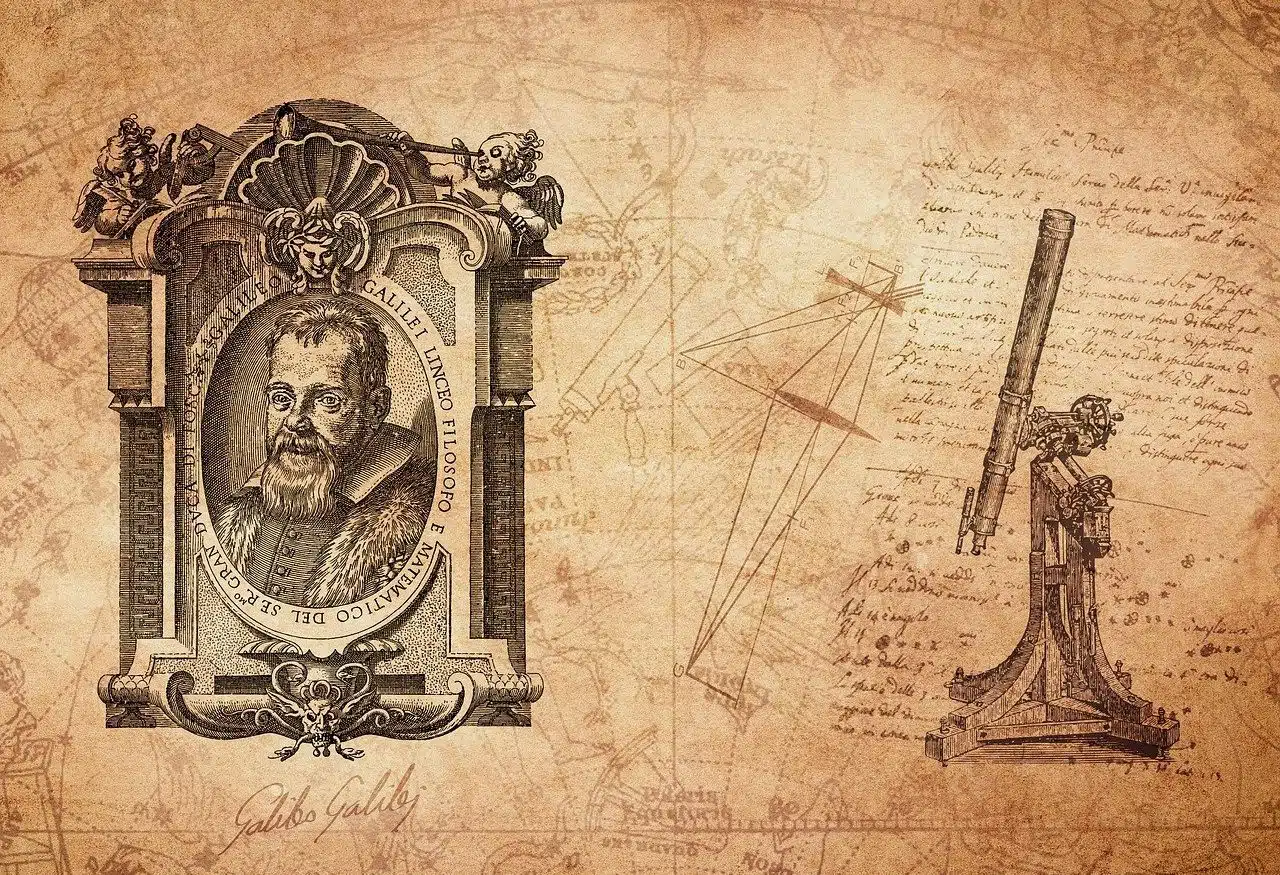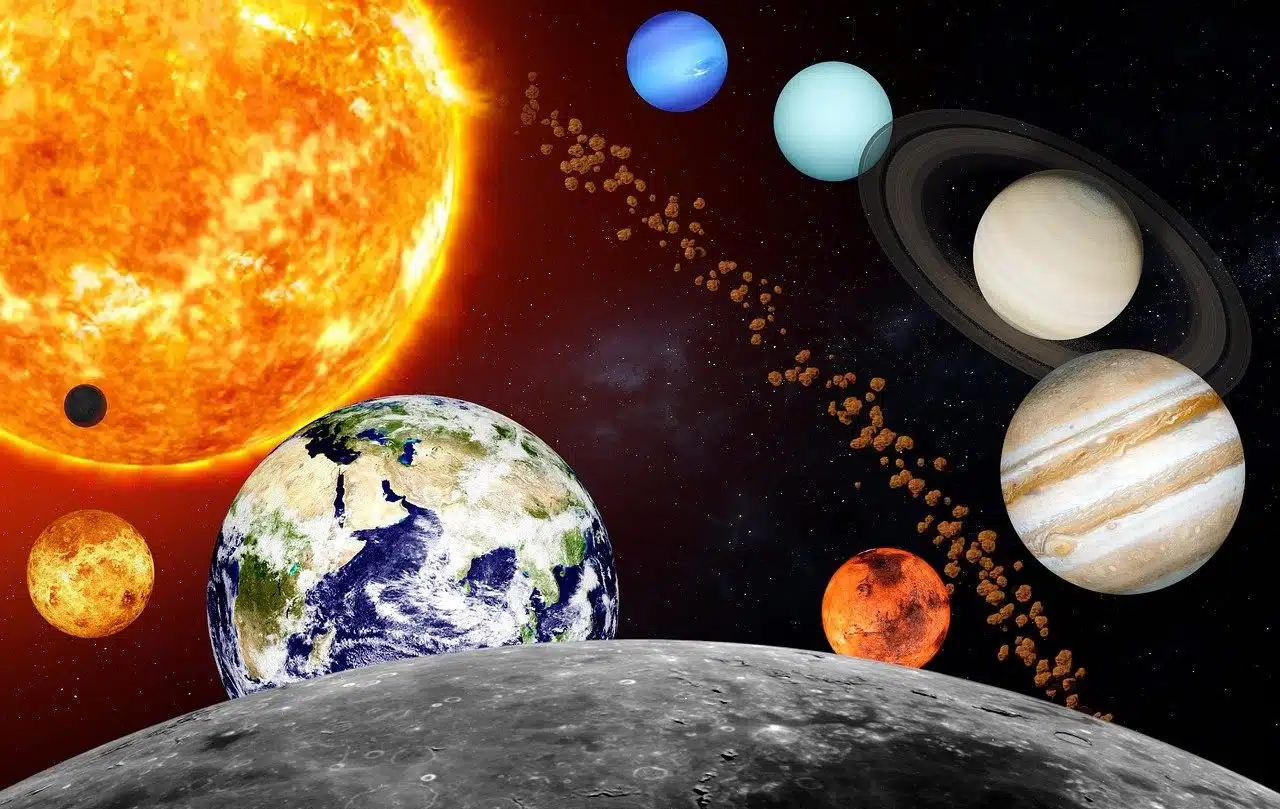
Galileo Galilei's legacy mainly encompasses astronomy and physics.
Galileo Galilei is the identity of a multifaceted man born in Italy who, for his valuable discoveries and achievements, is recognized universally as "the father" or main exponent of modern science .
His arrival into the world, according to records, occurred on February 15, 1564 in Pisa , while his death took place on January 8, 1642 in Arcetri . Galileo di Vincenzo Bonaiuti de' Galilei (descendant of Giulia Venturi degli Ammannati and Vincenzo Galilei ) was educated in mathematics , physics , engineering and astronomy . His contributions and works were key and gave a considerable boost to the scientific revolution . In addition to being an influential figure within science , this Italian has positioned himself as a great source of inspiration for scholars of complex and creative topics who dedicate themselves to art (giving him visibility in the fields of literature, painting, cinema and music).
Shortly after reaching his first decade of existence, who was a member of a large family, he entered the monastery of Santa María di Vallombrosa in Florence . Seasons later, his father enrolled him in the University of Pisa and there Galileo studied philosophy , mathematics and medicine . With theoretical bases and guided by his inexhaustible curiosity, Galilei added discoveries and gained work experience by working as a professor at, for example, the University of Padua , where he taught mechanics , astronomy and geometry . This scientist, who had three children with Marina Gamba ( Virginia , Livia and Vincenzo ), also gave private classes to people of high social class.
Scientific contributions of Galileo Galilei
Galileo Galilei's scientific contributions were many and of enormous relevance.
He did not hesitate, remembering one of his greatest feats, to build his own telescope . With his design he managed to observe several moons of Jupiter . The sighting was at the beginning of 1610: Callisto , Ganymede , Io and Europa are called the Galilean satellites . With this novelty, the astronomical model of heliocentrism promoted by Nicolás Copernicus was strengthened.
On the other hand, he carried out experiments and research that gave content to the laws of motion , analyzed the weighing pendulum and its oscillations, created the heart rate monitor and made significant discoveries regarding the law of the pendulum .
Inventing the thermoscope , studying the characteristics of magnets , detecting both craters and mountains on the moon and seeing the rings of the planet Saturn also appear among the actions he carried out.
More studies, observations and research
As time went by, Galileo carried out more studies, observations and research whose importance and significance continues to this day.
He contributed to deepening knowledge about sunspots , made history by applying the experimental scientific method , recognized the phases of Venus and presented a theory of tides (content of the work he named "Dialogue on Tides" ), for add precisions. Unforgettable is, in the same way, the test he carried out on the Leaning Tower of Pisa, letting two spheres that had different masses fall from the highest sector in order to make a demonstration of the independence between the mass of the falling body. and the time it takes to descend.

Sunspots, mountains on the moon and satellites of Jupiter are part of Galilei's findings.
Galileo Galilei in popular culture
Galileo Galilei is present in thousands of manifestations and expressions of popular culture at a universal level .
There are many portraits focused on his figure, plays that revolve around his experiences (in 1939, for example, Bertolt Brecht wrote the theatrical material known in Spanish as "The Life of Galileo" ) and films about him (in In 1969, Liliana Cavani directed "Galileo" and in 1975 Joseph Losey was in charge of directing "The Life of Galileo" , to indicate two audiovisual productions that focus on Galilei ).
«Galileo, messenger of the stars» y «The silence of Galileo» son publicaciones que invitan a descubrir quién fue y qué legado dejó el mencionado experto, artífice de textos y tratados como "Sidereus nuncius", "The Assayer" y «Discourse and mathematical demonstration around two new sciences».

The Catholic Church rejected Galilei's position in favor of heliocentrism and prosecuted him on two occasions.
Controversies
When reviewing the biography of Galileo Galilei , controversies, controversies, litigation and criticism that had him as the protagonist come to light.
As a result of his adherence to the heliocentric model , as appears from the records, he had conflicts with the Catholic Church . This rejection resulted in censure and condemnation by the Church , for which in 1992 Pope John Paul II ended up asking for forgiveness. In the first instance, he was sentenced to renounce the defense and dissemination of heliocentric positions (in this scenario of conflicts between science and religion, Galileo's abjuration occurred). Secondly, the Roman Inquisition , finding him guilty of heresy (which is why he was brought before the Tribunal of the Holy Office ), punished him with house arrest (which he maintained until his death) and materials on heliocentrism were prohibited.
